#Minami Saori
Explore tagged Tumblr posts
Text

Original title: 賭ケグルイ.
#tv shows#tv series#polls#kakegurui#saori hayami#miyuki sawashiro#minami tanaka#2010s series#japanese series#have you seen this series poll
23 notes
·
View notes
Text






13 notes
·
View notes
Note
five more since you said youd like to hear more of my ships. last time tho cuz i dont wanna annoy you too much with them
taiga x haru
saori x hyakutaro
minami x yutaka
yui x kazuki
hyakutaro x tatsuto
((((((((im honestly surprised none of my rarepairs came up as i have quite a few of them LMFAOOO)))))))
opinions coming right up!!
Taiga x Haru
there are. SO many cat pictures i associate them with. like specifically the ones where there are two kittens and one is ferociously trying to protect the other. do you see my vision.

Saori x Hyakutaro
Not really my thing but DAMN the potential is certainly there

Minami x Yutaka
Listen i may prefer mirin in literally every way BUT these two make me insane also. nothing bad happens to them ever🪄🪄🪄

Yui x Kazuki
The mind games would go crazy

Hyakutaro x Tatsuto
Definitely more on the platonic side for me but still i lov <3

#i answer sometimes#tribe nine#taiga tribe nine#haru shirogane#saori arisugawa#hyakutaro senju#minami oi#yutaka gotanda#yui kamiki#kazuki aoyama#tatsuto tatsunuma
2 notes
·
View notes
Text

Artist - 南沙織 (Minami, Saori) Song - 傷つく世代 (Kizutsuku Sedai) [Eng. "Suffering Age"] Release Date - May 1973
Listen 🎶
https://rumble.com/v4s9gue-saori-minami-kizutsuku-sedai.html
My blog: Showa Music Library https://nobbykun.tumblr.com/
4 notes
·
View notes
Text
70s Japan Trends Through the Music Charts (Part 2)
During the 1970s, the Japanese music industry was in the process of forming its identity. In addition to mirroring the musical preferences of the nation, the charts also served as a reflection of the prevailing societal trends and ambitions of that era. In this series, we chronicle the most significant musical trends of the decade.
70s Japan Trend Through the Music Charts (Part 1)
Trend #4: The Impact of Discover Japan
In 1970, Osaka hosted the World Expo, marking a significant milestone for post-war Japan following the 1964 Tokyo Olympics. To accommodate the influx of visitors, the government expanded the rail network, enabling over 60 million people—half of the nation's population—to journey to the World's Fair. However, as the Expo drew to a close after six months, concerns arose about the railways becoming obsolete. So, with the help of the ad agency Dentsu, they devised a campaign to stimulate domestic tourism by rail. The result was "DISCOVER JAPAN," one of the most iconic campaigns of the decade (which, curiously, was partially inspired by Ivy Fashion brand VAN).
"DISCOVER JAPAN" profoundly impacted Japanese society by popularizing solo travel and igniting domestic tourism, particularly among young women who ventured out on their own. This trend was further fueled by the launch of the first female fashion magazines, AnAn and Non-no, both of which regularly featured articles on charming touristic cities across the country. Cities known as "Little Kyoto," which retained their Edo Period architecture and charm, were particularly attractive to these travelers.
Influenced by fashion magazines, these trend-conscious women journeyed to towns throughout Japan, earning them the moniker "AnNon" (a fusion of AnAn and Non-no). Their impact during the 1970s was significant enough to be mentioned in a song by Sada Masashi, one of the decade's prominent folk singers.

"DISCOVER JAPAN," the print and TV campaign devised by Dentsu, is one of Japan's most successful and era-defining marketing campaigns.
Sada Masashi rose to fame in the early 1970s as part of the folk duo Grape before launching a successful solo career. In 1977, his song "Ehagakizaka," which paid tribute to his hometown of Nagasaki, mentioned identically dressed stylish young girls in denim, clutching AnAn and Non-no magazines while photographing their surroundings. This song vividly captured the aspirational girl culture of the 1970s, characterized by "healing" domestic trips in pursuit of tranquility and small pleasures, hippie and boho-inspired fashion, and folk music as the soundtrack.
Masashi Sada's song and the AnNon-zoku tribe aside, "DISCOVER JAPAN" had an immense impact on different layers of Japanese society. And that included the music charts. In 1971, the two best-selling singles, "Watashi no joka-machi" by Rumiko Koyanagi and "Shiretoko ryojou" by Tokiko Kato, surpassed 1 million copies sold. Both perfectly embodied the campaign's spirit in highlighting the hidden beauties of Japan.
"Watashi no jokamachi," or "My Castle Town," marked Koyanagi's explosive debut, selling over 1.3 million copies. This enka-infused kayokyoku ballad paid homage to cities with Edo-like architecture, often centered around a feudal lord's castle, evoking a peaceful, melancholic atmosphere in its lyrics. Rumiko continued to sing about regional Japan's charms the following year with another hit, "Seto no Hanayome" (The Bride of Seto). Meanwhile, the folk-inspired "Shiretoko ryoujou" (Shiretoko Journey) celebrates the unique beauty and culture of the Shiretoko peninsula on Hokkaido Island.
In the same year, other artists also succeeded by spotlighting provincial Japan. Enka superstar Shinichi Mori delved into this theme with "Boukyou" (Nostalgia). At the same time, Yuuko Nagisa found success with a Japanese rendition of The Ventures' "Kyoto Doll," titled "Kyoto no Koi" (Love in Kyoto). She would go on to have another top-selling single with her version of another Ventures song, "Reflection in Palace Lake," transformed into "Kyoto Bojo" (Kyoto Longing).
Trend #5: The Legend of Momoe Yamaguchi
"Aidoru" or "idols" are cute girl/boy-next-door types who sing, dance, act, host TV shows, and star in countless commercials. They stand as one of the cornerstones of the thriving multi-billion yen Japanese entertainment industry. The 70s was an essential era for consolidating this type of star. And one idol, in particular, shone the brightest: Momoe Yamaguchi.
Momoe is a legendary star and an example of an "aidoru" who excelled at everything, exuding sophistication, talent, and sex appeal. The fact she retired from public life at the height of her fame cemented her mythical status.

Momoe Yamaguchi in her prime, the idol industry's gold standard.
In 1972, at the tender age of 13, Yamaguchi auditioned for the talent search TV show "Star Tanjou!" (A Star is Born). Her crisp singing voice and mature beauty immediately captured the industry's attention. Hori Production, the entertainment agency, and Sony CBS label swiftly recognized her potential and signed her. In May 1973, five months after her televised audition, she made her official debut with the single "Toshigoro" (Adolescence). Although Sony had a history of immediate success with newcomers, Momoe's first single received a tepid response, so her label decided to court a bit of controversy for her sophomore outing. "Aoi kajitsu" (Ripe Fruit) had the innocent-looking 14-year-old girl singing, "you can do whatever you want to me, even if they say I'm a bad girl." The racy lyrics worked, and the single was a success.
A few months later, Yamaguchi's backers repeated this formula with "Hito natsu no keiken" (One Summer Experience). The song began with a suggestive promise: "I'll give you the most precious thing a girl has." The lyrics were laden with double entendres, describing a "sweet trap of temptation" that can only be experienced once. She sang, "if the person I love is pleased, then I'm happy. I don't mind if you break it," which could be understood as a reference to a girl's heart or hymen.
The single was an explosive hit, propelling 15-year-old Yamaguchi into the A-list. For the remainder of her career, she was frequently asked about the "most precious thing a girl has," to which she'd always offer a stern-looking reply: "Her devotion."
The young, mature-looking girl singing thinly veiled songs about sexual awakening with a dark, serious-looking image set her apart from the prevalent happy-go-lucky idol aesthetic. However, it wasn't merely reliance on gimmicks that transformed her into a legend. In 1976, after firmly establishing herself as a star, she parted ways with her frequent collaborators, lyricist Kazuya Senke and composer Shunichi Tokura. Beginning with the single "Yokosuka Story," she partnered with the husband-and-wife duo Yoko Aki and Ryudo Uzaki.
Ryudo Uzaki, the frontman of the popular enka rock band DOWNTOWN BOOGIE WOOGIE BAND, infused her kayokyoku tunes with a rock edge. Through her lyrics, Yoko Aki redefined Momoe's image as a confident, clear-eyed girl transitioning into womanhood. Sony initially opposed Momoe's desire to collaborate with Aki and Uzaki, but the partnership ultimately helped her reach her commercial peak.
"Yokosuka Story" was Momoe's first single to reach the number 1 spot on the weekly charts. The Aki-Uzaki duo penned several other hits for her, including "Playback Part 2" and "Sayonara no mukougawa" (The Other Side of Goodbye), and opened doors for her to collaborate with other luminaries of Japanese music. Two of her most memorable hits, "Cosmos" and "Ii hi tabidaichi" (Beautiful Day Departure), both released in 1978, were penned by folk superstars Masashi Sada and Shinji Tanimura of Arisu, respectively. The latter became the theme song for the iconic DISCOVER JAPAN TV commercials.
Speaking of commercials, idols worth their salt can't limit themselves to music. Momoe earned millions as the face of Toyota cars, Fujifilm photographic films, Casio watches, and Glico confectionary products, among others. She also starred in highly rated TV dramas and ventured into the world of film.
Starting in 1974, she appeared in two romantic films per year, always paired with Tomokaza Miura as her co-star. While Momoe pursued various ventures, Miura's acting career primarily revolved around being her on-screen romantic partner. Their undeniable chemistry and the box-office success of their films led to them being known as the "golden combination."
In a concert at the end of 1979, Momoe stunned her audience by revealing that her on-screen partner, Miura, was her real-life boyfriend. In a subsequent press conference in March of the following year, she confirmed her intention to marry him and retire officially. In September, she released her autobiography, which sold over 1 million copies in a month. In October, she bid farewell through a series of TV specials and a concert at Nippon Budokan. Her farewell concert reportedly earned Hori Productions over 20 million dollars, according to figures provided by the agency to Billboard magazine at the time. Momoe's success allowed HoriPro to become one of the best-established entertainment agencies in Japan, a position it still holds today. Her final performance took place at HoriPro's 20th-anniversary event, where she sang "Ii hi tabidaichi." In November, she married Miura and disappeared from the media.
The Japanese public obsession with her never waned. Paparazzi tried to capture her at her son's kindergarten graduation ceremony and doing classes at a local driving school. Many speculated she'd eventually come out of retirement. She never did, which only helped feed the obsession around her.
During the 1970s, Yamaguchi enjoyed immense success, but she was one of many popular female idols. The narrative created by her retirement elevated her to the status of a larger-than-life legend. She became the gifted, beautiful young woman who succeeded as a singer, a TV actress, and a movie star before choosing the ultimate happy ending: marriage. By choosing love, Momoe Yamaguchi, the legendary idol, transformed into an ordinary woman—a real-life fairy tale that resonated deeply with Japanese society.
Her decision was driven by profound motivations. Momoe revealed in her autobiography that she was raised by a single mother, the product of an extramarital affair. Her challenging upbringing and her father's late appearance to capitalize on her fame instilled a deep desire for a traditional, happy family life. She also grew weary of the relentless demands of stardom and the repetitiveness of performing the same songs. Thus, she made a heartfelt choice to relinquish fame and public life to give her husband the most important thing a girl has: her devotion.
Trend #6: Idols' Rise
The term "idol" in the Japanese entertainment industry finds its origins in the French film "Cherchez l'idole" (1963), which enjoyed immense popularity in Japan. Initially, "Aidoru" was used to describe the film's star, Sylvie Vartan, before it evolved into a general term to describe youthful-looking triple-threat domestic stars.
Before the coining of the term, "idol-like" stars had already existed. In the 1930s, Machiko Ashita attracted crowds to the Moulin Rouge Shinjuku and served as the face of several brands. In the 1950s, rockabilly stars enjoyed massive popularity among the youth, and the 1960s saw the rise of manufactured "group sound" bands and the female duo The Peanuts, comprised of twin sisters. Legendary stars such as Hibari Misora, Sayuri Yoshinaga, Teruhiko Saigo, Yukio Hashi, and Kazuo Funaki thrived as both movie stars and successful singers.
However, the 70s marked the consolidation of the "idol" aesthetic and career path, paving the way for the "golden era of idols" in the next decade. Essential for it to happen was the widespread adoption of the medium where idols shine the brightest: television.
TV allowed entertainment agencies to aggressively push their young, fresh-faced talents in front of a broad audience. They populated music and variety shows, commercials, and dramas. They were immaculate, life-sized stars ready to play the part of the nation's sweethearts.
Although history has crowned Momoe Yamaguchi as the ultimate 70s idol, she was just one among many during most of that decade. A closer examination of the numbers reveals that, among female idols, Mari Amachi had the most significant short-term impact during that time.
Amachi was first introduced on the popular TBS TV drama "Jikan desu yo" (It's Time) in 1971, playing "Tonari no Mari-chan" (Next Door Mari-chan). She played the minor role of a cute girl who lived close to the show's primary setting, a family-run public bathhouse, and often appeared by her window, playing guitar and singing. By October, with the backing of the biggest entertainment agency of the era, Watanabe Production, and Sony CBS, 19-year-old Mari Amachi officially debuted with the single "Mizuiro no Koi" (Light Blue Love). It was a hit—the first of many. Mari would be 1972's best-selling act, achieving high sales with four albums and five singles.
Mari's image, characterized by an innocent aura, a happy-go-lucky personality, and frilly dresses as stage outfits, became the prototype for female idols. Her short hair and chiseled smile earned her the nickname "Sony's Snow White," evoking the image of a fairytale princess. Unsurprisingly, she was particularly popular with children, leading Watanabe Pro to license her likeness for various goods, including the coveted "Do-Re-Mi Mari-chan" Bridgestone Cycle bicycle, highly sought after by young girls in the early 70s.
Despite her rapid rise to fame, Mari's time at the top was short-lived. By 1974, another Watanabe Pro idol, Agnes Chan, was already surpassing her in sales. In 1977, Mari's health deteriorated, and she took a lengthy hiatus, officially attributed to thyroid issues but later revealed to be depression triggered by her waning popularity. In 1979, she attempted a comeback, even bagging an endorsement deal for an ultrasonic facial device, one of the year's hit items for women. But her time had passed, and she didn't find much success. Eventually, Mari's career took unconventional turns, including involvement in a softcore porn movie, the release of nude photobooks, and a transition to becoming a "fat" talento (TV personality), followed by a weight-loss book.
In 2015, in her last public interview, she revealed that, at 63, she was living in a retirement home in the Tokyo suburbs. Her fan club covered her expenses, while her daughter provided a modest weekly allowance. This marked a stark contrast to her glamorous peak years and serves as a reminder of the challenges idols face in the Japanese entertainment industry, particularly women, and how easily discardable idols can be. It also shows how wise Momoe Yamaguchi was, bowing out gracefully at the right time.
However, Momoe Yamaguchi and Mari Amachi represent two extremes within the realm of idols. While Mari achieved record profits for two years before facing decline and eventual obscurity, Momoe maintained relevance for nearly a decade before choosing to marry her on-screen partner, retire, and become a living legend. Most other 70s idols did not experience such remarkable destinies.
In 1971, two other young idols, Rumiko Koyanagi and Saori Minami, made their debut alongside Mari Amachi. The trio was collectively known as the "shin sannin musume," or the "three new girls." Their joint concert at the Budokan on Christmas of 1972 solidified their shared nickname.

The Shin San-nin Musume. Clockwise: Rumiko Koyanagi, Mari Amachi, and Saori Minami.
Rumiko Koyanagi had her skills honed at the Takarazuka Music School. Takarazuka is a very traditional, all-female theater group, and their training academy is known to be highly rigorous and selective. Koyanagi graduated top of her class but wanted something other than a musical theater career. Instead, her goal was to debut as a solo singer. So she left the Takarazuka Revue and signed with Watanabe Pro and Warner Pioneer label to fulfill her dream. Her first song, "Watashi no joka-machi" (My Castle Town), buoyed by the "Discover Japan" boom, surpassed 1 million copies sold, becoming the best-selling single of 1971.
Rumiko's repertoire predominantly featured enka-influenced kayokyoku. Her classical sound may not have been as appealing to the youth as some of her peers' slightly more modern tunes, but it ensured her stable sales throughout the decade. In her sixties, Rumiko has reinvented herself as a passionate soccer fan and a glamorous senior lady, sharing lifestyle tips and her love for Chanel and Lionel Messi on Instagram. She also conducts dinner shows, a lucrative type of intimate concert usually held at luxury hotels, where fans pay hefty prices to enjoy a multi-course dinner while listening to nostalgic hits.
The third "shin sanin musume" is Saori Minami. Minami didn't have a million-selling debut like Rumiko, nor did she become an instant sales behemoth like Mari. That didn't mean she was less impactful. Quite the opposite. Hailing from Okinawa, still under US occupation during her debut, Saori impressed Japan with her exotic beauty. In 1971 and 1972, she outsold every other female idol in bromide sales. Bromide is the local terminology for photographic portraits of celebrities, and historically, its sales are the best way to gauge how popular an idol is.
Her first single, "17-sai" (17 years old), became a classic and enjoyed enduring popularity, with several artists covering it over the decades. After retiring in 1978 upon her marriage to legendary photographer Kishin Shinoyama (known globally for his portraits of John Lennon and Yoko Ono), Saori made a comeback in 1991 but has made only sporadic public appearances since then.
Two years after the emergence of the "shin sannin musume," a new trio of newcomers known as the "Hana no Chuusan Trio" or the "Chuusan's Flower Trio" (a reference to the fact all of them were in Chuusan, the third year of middle school) came into the spotlight. Masako Mori, Junko Sakurada, and Momoe Yamaguchi were all revealed in the talent search TV show "Star Tanjou" (A Star is Born). In 1975, by the time they were in their second year of high school (kou 2), they co-starred in the successful film "Hana no Kou 2 Trio."
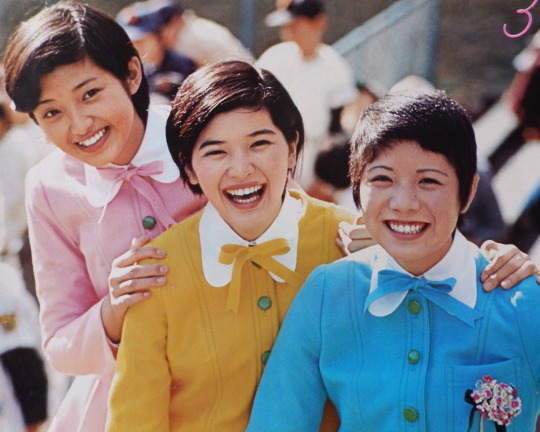
The Hana no Chuushan Trio: Momoe Yamaguchi, Junko Sakurada and Masako Mori.
At 13 years old, Masako Mori secured her place as the inaugural "Star Tanjo" grand champion in 1971. The following year, she debuted under Hori Production and swiftly soared to success. Mori's music was deeply influenced by enka, and by the end of the decade, she had solidified her status as a fully-fledged enka star. In 1986, she tied the knot with enka superstar Shinichi Mori, leading her to retire from the entertainment scene. However, in 2005, following her divorce, the former idol made a comeback, embarking on tours and participating in TV dramas for a few years before ultimately deciding to bid farewell to her career once more on her 60th birthday in 2019. Notably, she shares three children with Shinichi Mori, including TAKA, the lead vocalist of the famous rock band ONE OK ROCK.
Junko Sakurada clinched victory at "Star Tanjo" in 1972 at 14. Subsequently, she signed with Sun Music agency and Victor Music, marking her official debut in February 1973 with the release of "Tenshi mo yumemiru" (Angels Also Have Dreams). Given their similar age, niche, and close debut dates, the industry and some fans pitted her against Momoe Yamaguchi despite their behind-the-scenes friendship. Both idols enjoyed substantial popularity, with Yamaguchi usually holding an edge in sales. The exception was in 1975 when Junpei, as fans affectionately knew her, dominated as the best-selling female idol in music and bromide sales.
In addition to her music career, Junko excelled as an actress. In 1983, she opted to conclude her singing career to dedicate herself solely to acting. A decade later, in 1993, the former idol shocked Japan by announcing her participation in a mass wedding ceremony organized by the controversial South Korean Unification Church at the Olympic Stadium in Seoul. Her husband had been chosen for her by the church.
Her association with the cult brought her career to a halt. With her image becoming closely linked to the church, TV networks and advertisers distanced themselves from her. Consequently, Junko relocated from Tokyo, devoting herself entirely to her faith and family. Since then, she has made a few comebacks. In 2006, she published a highly-publicized essay book, and in 2013, she celebrated the 40th anniversary of her debut with a special concert. In 2017 and 2018, she returned to the stage, coinciding with her musical comeback and the release of a new album, "My Ideology."
After this project, Junko has remained out of the spotlight, with an official return unlikely unless she completely renounces her ties with the United Church. The cult's controversial image became even more repellent following the murder of former Prime Minister Shinzo Abe in July, committed by a young man who attributed his family's financial and psychological turmoil to the church. Consequently, the cult's unethical financial practices and ties to the ruling Liberal Democratic Party have become widely discussed topics in the country. For Junko Sakurada, her affiliation with the cult has overshadowed her otherwise successful decades-long career.
Completing the trio alongside Junko and Masako was Momoe Yamaguchi. Although Yamaguchi's career has eclipsed that of almost every other idol of the 1970s, she initially experienced the least success among the three young girls. Unlike her peers, both of whom had claimed grand champion titles at "Star Tanjou!," Momoe secured second place at her final showcase. Moreover, her debut single was the poorest-selling among the trio. However, she would ultimately emerge as the definitive idol, and her retirement would serve as the perfect conclusion to an epoch-making career.
While Momoe, Junko, Masako, Mari, Agnes, Rumiko, and Saori, among others, collectively set an impressive precedent for future female idols, male idols also played a significant role in the era. In terms of profitability, male idols reigned supreme, thanks to the unwavering loyalty of their female fanbase.
Johnny Kitagawa, the late founder of Johnny's Jimusho, eventually became the most influential figure in the entertainment industry. He monopolized this niche for decades with his boybands. However, during the 1970s, Kitagawa was not among the most powerful. Although his agency achieved considerable success with the boyband Four Leaves, it was soloist Hiromi Go who briefly held the nation under his sway between 1973 and 1974. Unfortunately for Kitagawa, this period of dominance proved fleeting, as Go departed for another agency in 1976, signaling that Johnny Kitagawa still had much to accomplish to solidify his authority.
With Johnny's domination still on the horizon, Hideki Saijo emerged as the most influential male idol of the 1970s. Saijo enjoyed success with several hit singles, including the ballad "Chigireta Ai," released in 1973, and 1979's "Young Man," a cover of Village People's "Y.M.C.A." Demonstrating the power of devoted fangirls, Saijo became the first domestic solo artist to perform a concert at Nippon Budokan. His popularity quickly transcended the Budokan, propelling him to the status of a stadium headliner and solidifying his position as the decade's top concert ticket seller.
The loyalty of fangirls meant that male idols consistently outperformed any act in ticket sales. In the 1960s, The Tigers, considered one of the pioneers of the "group sound" movement and regarded by many as Japan's first idol group, became the first domestic act to hold a stadium concert. By the following decade, the "group sound" era had ended, but some former band members successfully transitioned into solo careers.
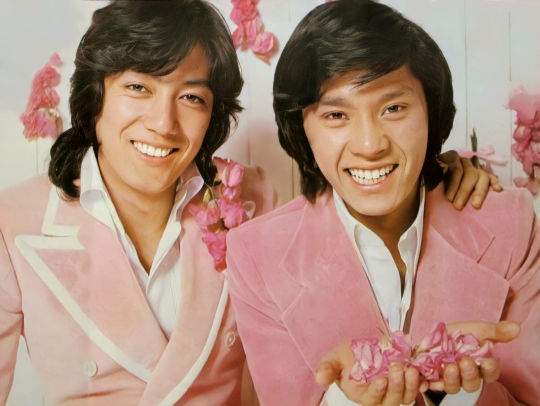
Kenji Sawada and Hideki Saijo, the two stadium-selling male idol superstars from the 80s.
Kenji Sawada, the former lead vocalist of The Tigers, remained a constant presence on the charts throughout the 1970s. Under the guidance of the influential Watanabe Pro agency, Sawada succeeded as a singer and actor. He brought a rockstar aura to his performances, incorporating impactful and extravagant visual elements and pioneering the use of makeup, drawing inspiration from David Bowie and glam rockers. In doing so, Sawada laid the groundwork for visual kei, a movement that would revolutionize Japanese rock in the late 1980s and early 1990s. Nicknamed "Julie" since his early days in the 1960s due to his admiration for Julie Andrews, Sawada continues to thrive as a prominent music figure in Japan, one of the few stars from that era still capable of selling out stadiums.
While girls' adoration often paves the way for male idols to enjoy lengthy careers, there are exceptions to this rule. In 1974, Finger 5 became one of the best-selling idol groups in the country. Comprising five young brothers from Okinawa, they were marketed as Japan's response to the Jackson 5 and consistently churned out hit singles. However, just two years later, their popularity took a nosedive. Several factors contributed to this decline, notably their heavy reliance on the two youngest members, aged only 10 and 12. These youngsters not only grappled with exhaustion from relentless work schedules but also faced the challenges of puberty, causing their voices to change and preventing them from hitting the right notes in their songs. Consequently, Finger 5 lost its appeal.
Finger 5's brief career underscores a crucial aspect of the idol industry: the importance of youthfulness. In Japan's gender-biased society, some male idols from the 1970s were granted the opportunity to age gracefully, evidenced by a few who maintained success well into their 60s and 70s. In contrast, female idols invariably confronted the pressures and inevitable decline associated with aging.
This brings us back to the quintessential idol of that era, Momoe Yamaguchi. By choosing to retire and steadfastly resisting any temptation to reenter the public eye, Yamaguchi effectively became frozen in time at 21 years old, her age at the moment she bid farewell to both showbiz and the public. This solidified her status as a legendary and unattainable icon—an idol who never aged.
70s Japan Trends Through the Music Charts (Part 3)
#enka#kayokyoku#momoe yamaguchi#70s japan#1970s#japanese music#jpop#discover japan#heibon punch#kenji sawada#hideki seiji#junko sakurada#70s idols#finger 5#mari tenchi#rumiko koyanagi#saori minami#four leaves#hiromi go
20 notes
·
View notes
Text
Hamabe Minami Is Sakura Ayane’s Oshi Ft. Oonishi Saori
youtube
2 notes
·
View notes
Text
Hello! Project Blog Translations
Here's a list of all the H!P blog fan translations blogs I run ❤️ Translations posted daily ✨
Morning Musume
@cheltranslations Nonaka Miki 💜
@loverintranslations Makino Maria 🩷
@homatantranslations Okamura Homare 💛
@haruakotranslations Inoue Haruka and Yumigeta Ako 🩵❤️
Angerme
@kamikotranslations Kamikokuryo Moe 🩵
@angermetranslations Matsumoto Wakana, Shimoitani Yukiho, Goto Hana 🤍🩷🩵
Juice=Juice
@juicetranslations Matsunaga Riai, Endo Akari, Kawashima Mifu 💙💚❤️
Tsubaki Factory
@saorintranslations Onoda Saori 🩷
@camelliatranslations Fukuda Marine, Yofu Runo, Murata Yuu 💙💛🤍🩷💚
BEYOOOOONDS
@miimitranslations Okamura Minami 💗
OCHA NORMA
@sumiretranslations Tashiro Sumire 💜
@kiraratranslations Yonemura Kirara ❤️
Rosy Chronicle
@rosy-translations Rosy Chronicle (Matsubara Yulia, Kamimura Rena) 🩵💛
OG Members (Blogs no longer active)
@haachintranslations Ogata Haruna (Morning Musume) 🩵
@minaminatranslations Nomura Minami (Kobushi Factory) 💙
Non H!P
@misakoaokitranslations Aoki Misako (Lolita fashion model) 💞
#cookiefools#hello!project#hello project#Hello pro#h!p#nonaka miki#Morning Musume#angerme#tsubaki factory#beyooooonds#ocha norma#makino maria#kamikokuryo moe#matsumoto wakana#onoda saori#fukuda marine#okamura minami#okamura homare#tashiro sumire#yonemura kirara#ogata haruna#Nomura Minami#misako aoki#Idol blog translations
2 notes
·
View notes
Text
youtube
Drugstore - Saori Minami (Cynthia Street, 1978)
#Soul#Soul Music#Soul Music Songs#Music#Cynthia Street#Drugstore#1978#Youtube#Saori Minami#Music Songs#CBS/Sony
5 notes
·
View notes
Text
The Persona Incorrect Arena Ultimax!

4 notes
·
View notes
Text
-watched 7/13/2024- 4 stars- on Netflix
98% Rotten Tomatoes

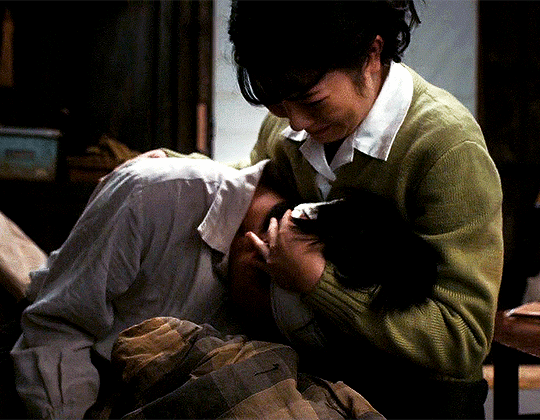

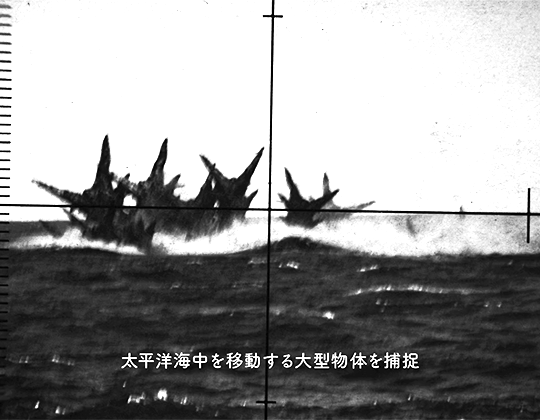

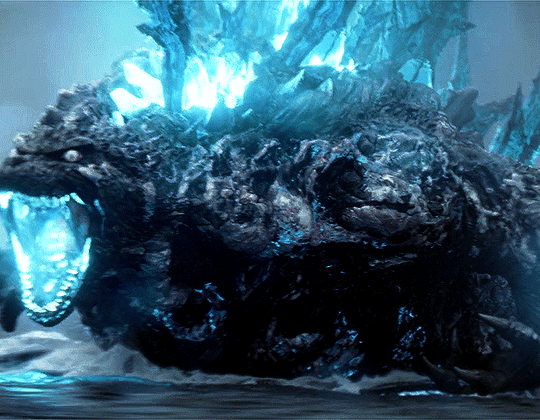
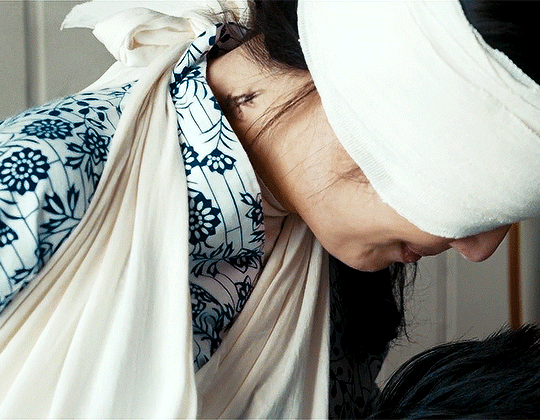
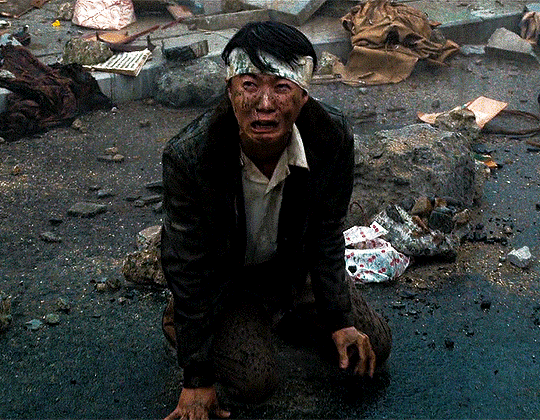

Is your war finally over? GODZILLA MINUS ONE (2023) dir. Takashi Yamazaki
#godzilla minus one#one of my fav 2023 movies!!!!!!#my have seen list#2023#film#takashi yamazaki#action/sci fi#minami hamabe#ryuunosuke kamiki#yuki yamada#sakura ando#hidetaka yoshioka#munetaka aoki#sae nagatani#kuranosuke sasaki#yuya endo#saori#kisuke iida#kunihiro suda#Netflix
5K notes
·
View notes
Text


'tis finally here... the bracket...
(matchups below the cut)
Jade & Hendrick (Dragon Quest XI) vs Westley & Buttercup (The Princess Bride)
Gwen & Frederick (Cursed Princess Club) vs Palamedes Sextus & Camilla Hect (The Locked Tomb)
Hori Masayuki & Kashima Yū (Gekkan Shoujo Nozaki-kun) vs Kohga & Sooga (Hyrule Warriors: Age of Calamity)
Zen & Mitsuhide (Snow White with the Red Hair) vs Marinette & Adrien (Miraculous Ladybug)
Glimmer & She-Ra/Adora (She-ra and the Princesses of Power) vs Utena and Anthy (Revolutionary Girl Utena)
Shrek & Fiona (Shrek) vs Gideon & Harrowhark (The Locked Tomb)
Mytho and Fakir (Princess Tutu) vs Kit Tanthalos and Jade Claymore (Willow)
Yuyuko & Youmu (Touhou) vs Duck & Fakir (Princess Tutu)
Lucy Heartfilia & Erza Scarlet (Fairy Tail) vs Sapphire (Princess Knight)
Korra & Asami (The Legend of Korra) vs Nathaniel Thorn & Silas (Sorcery of Thorns)
Link & Zelda (The Legend of Zelda) vs Cassandra & Rapunzel (Rapunzel)
Cordelia Glenbrook & Avlora (Triangle Strategy) vs Luke & Leia (Star Wars)
Han Solo & Chewbacca (Star Wars) vs Ranni & Blaidd (Eldin Ring)
Princess Cookie & Knight Cookie (Cookie Run) vs Eugene & Rapunzel (Rapunzel)
Hamlet & Horatio (Hamlet) vs Endymion and Princess Serenity (Sailor Moon)
Rysn Ftori & Cord (The Stormlight Archive) vs Glory & Deathbringer (Wings of Fire)
Dehya & Dunyarzad (Genshin Impact) vs Sadie & Amira (Princess Princess Ever After)
Minerva & Palla (Fire Emblem) vs Bubblegum & Marceline (Adventure Time)
Sapphire & Ruby (Steven Universe) vs Poppy & Cyrenic (Sleepless)
Sapphia & Odette (High Class Homos) vs Mario & Peach (Mario)
Florence Vassy & Svetlana Sergievsky (Chess) vs Ryne & Thancred (Final Fantasy XIV)
King Dedede & Meta Knight (Kirby) vs Kyros & Rebecca (One Piece)
Prince Adam & Teela (He-Man) vs Sir Miranda Aldes (Tumblr)
Vin & Elend Venture (Mistborn) vs Arturia Pendragon & Bedivere (Fate)
Ventuswill & Frey (Rune Factory 4) vs Alphonse Elric & Mei Chang (Fullmetal Alchemist)
Orym of the Air Ashari & Dorian Storm (Critical Role) vs Kokomi & Gorou (Genshin Impact)
Suletta Mercury & Miorine Rembran (Mobile Suit Gundam: The Witch from Mercury) vs The moon and the earth (real life)
Saori Kido and Pegasus Seiya (Saint Seiya) vs MK & Mei (LEGO Monkie Kid)
Haruno Haruka/Cure Flora & Kaido Minami/Cure Mermaid (Go! Princess Pretty Cure) vs Apple White & Darling Charming (Ever After High)
Rose Quartz & Pearl (Steven Universe) vs Yona & Hak (Yona of the Dawn)
Ariyet & Hew (Through the Door) vs Elincia & Lucia (Fire Emblem)
Impa & Zelda (The Legend of Zelda) vs Violetta Mondarev & Tarvek Sturmvoraus (Girl Genius)
#heeeeeey poll runners who might be following me. you can totally reblog this if you want.#since like. its been a while since i started this.#also if something got fucked up PLEASE tell me nicely it took. it took so long to get it all without mistakes.
76 notes
·
View notes
Text

Artist - 南沙織 (Minami, Saori) Song - 早春の港 (Sōshun No Minato) [Eng. "A Port In Early Spring"] Release Date - January 1973
Listen 🎶
My blog: Showa Music Library https://nobbykun.tumblr.com/
4 notes
·
View notes
Photo

Saori Minami - Cynthia
6 notes
·
View notes
Text
It's Pride Month, Persona Fans
You know what that means.
That's right, it's time to vote on gay polls!
Nah but in all seriousness, we are finally beginning the final Social Link Showdown! Preliminary rounds will be decided by roulette wheel, with our three winners getting guaranteed spots in the Best category! That leaves 71 characters to sort into best and worst, the last one being decided on based on their own merit!
Our Matchups are under the cut! The Preliminaries begin on June 9th!
Sumire Yoshizawa V Yukari Takeba Ken Amada V Ryotaro Dojima Takuto Maruki V Rise Kujikawa Mutatsu V Yuuki Mishima Bebe V Shu Nakajima Tae Takemi V Mamoru Hayase Futaba Sakura V Yosuke Hanamura Daisuke Nagase V Kanji Tatsumi Sayoko Uehara V Suemitsu Nozomi Fuuka Yamagishi V Chie Satonaka Ai Ebihara V Yumi Ozawa Eri Minami V Rio Iwasaki Ichiko Ohya V Hifumi Togo Fox V Hidetoshi Odagiri Ayane Matsunaga V Twin Wardens Igor (P5) V Shinya Oda Chihaya Mifune V Toranosuke Yoshida Sae Nijima V Pharos Yusuke Kitagawa V "Maya" Kenji Tomochika V Morgana Kazushi Miyamoto V Ann Takamaki Ryoji Mochizuki V Junpei Iori Yuko Nishiwaki V Haru Okumura Old Couple V Tohru Adachi Naoki Konishi V Akinari Kamiki Marie V Goro Akechi Maiko Oohashi V Koromaru Makoto Nijima V Tanaka Shinjiro Aragaki V Chihiro Mifune Akihiko Sanada V Mitsuru Kirijo Munehisa Iwai V Margaret Ryuji Sakamoto V Keisuke Hiiraga Hisano Kuroda V Sadayo Kawakami Naoto Shirogane V Kou Ichijo Saori Hasegawa V Teddie
Yukiko will be decided upon separately, as she was the odd one out.
10 notes
·
View notes






